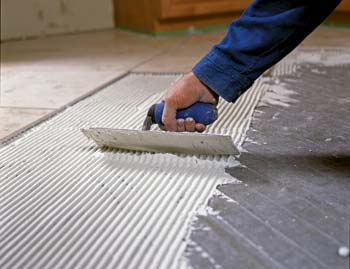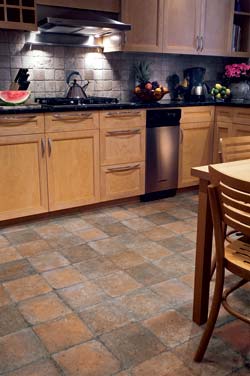by: Jim Cooper | Log Home Living
 1. I want to build a 1,600-square-foot getaway home, and I'd like it done by the holidays. What are the top three things I need to do to create a smooth building process?
1. I want to build a 1,600-square-foot getaway home, and I'd like it done by the holidays. What are the top three things I need to do to create a smooth building process?Your deadline puts your project on a fast track. Whether your home is a weekend getaway or a primary residence, all of the steps required (along with a score of subcontractors!) are the same as you’d find for any custom project. Most customs homes—from groundbreaking to move in—take six months or more to build, and I’ve worked on homes that have taken two years. The design phase, along with obtaining building permits, aren’t included in this. Still, there are ways that you can be in your dream home before the snow flies this winter.
The three most important elements of a fast-track project are thorough planning, detailed documentation and careful choices. In most home projects, planning takes longer than actual construction, so anything you can do to shorten this process will pay off. Instead of designing from scratch, look for a stock plan from a log provider or design service that will require only minor modifications. If you can use an existing plan, you’ve shaved months off of your construction timeline.
As soon as you have a final design, prepare detailed specifications for your project. From countertops and flooring to plumbing fixtures and lighting, your home’s specifications tell your builder exactly what you want. There are pre-formatted specification sheets available from a variety of sources (check pathnet.org), or you can pay a home-planning pro to prepare the specs for you.
You also should consider a systems approach to building. This means having your builder buy entire component assemblies, such as pre-cast foundations or sub-flooring, that are assembled in factories and come to your home site ready to install. While the pre-cast foundation is being prepared at the factory, your log provider can be preparing your log package.
2. My building budget is tight, so I want someone who understands how to work efficiently without cutting corners. How do I find one?
Research rules. If there are homes similar to the one you’re planning, contact their owners to find out about their builder and the experience they had with him. Visit major building-supply stores, and ask employees there about who’s building the kind and size of project you anticipate. Contact the local homebuilder association and describe your project. All of these sources should help you assemble a list of folks who could potentially tackle your job.
Follow up with interviews with builders who appear most promising based on your research. Obtain references and check them out carefully. Use the most current references you can find, because crew turnover and changing economic circumstances can quickly affect a builder’s performance. Because your project is on a fast track, pay special attention to the size of the builder’s crew and their record of meeting deadlines and adhering to budgets.
3. My builder is working on three different projects at once, and my house is falling behind schedule. What should I do?
It’s typical for a builder to have several projects going at once. Your goal is to get high priority. Here is one area where money talks. When drawing up your construction contract, make sure your builder understands your time requirements. Include an incentive payment based on timely completion. You also might want to add a penalty clause if your project extends beyond a specified date, though incentives generally work better than penalties. Make sure that both incentives and penalties are a large enough sum to be meaningful. A $500 bonus for beating your deadline isn’t much of an incentive on a 1,600-square-foot project. However, a bonus of 2 to 3 percent of the contract price will get a builder’s attention. Consider a structured reward-penalty clause that gives an opportunity to earn a higher reward. For example, you might offer a bonus of 1 percent of contract price for beating a specified deadline by up to one week, 2 percent for beating it by 1 to 2 weeks, and 3 percent for beating it by more than two weeks. A penalty of $100 to $300 per day would discourage overruns.
Even when using incentives or penalties, it’s still important that your project timeline be thoroughly documented before work begins. Most construction projects fall behind when builders have to wait for homeowners to make decisions, when materials are ordered late, and when crews must re-do work that wasn’t clearly explained to them. So be sure that everyone knows their deadlines and meets them—including you!
4. What recourse do I have if my builder chooses and installs kitchen countertops (or anything else) that I’m unhappy with?
If your countertop choice was clearly specified in your construction contract, your builder is obliged to meet the contract terms. Point out the specification, and ask the builder to make a correction. Alternatively, if you can live with the builder’s choice, you might offer to accept it at a reduced price. If you insist on replacing the countertops and don’t have anything in your contract to back you up, expect to pay for replacing the countertops. Depending on the builder’s arrangement with his supplier, you might have to pay for both sets of countertops.
 5. I have experience with laying tile, and I’d like to do floors in my cabin’s kitchen and bathrooms. How do I insert myself into the building process without getting in the way?
5. I have experience with laying tile, and I’d like to do floors in my cabin’s kitchen and bathrooms. How do I insert myself into the building process without getting in the way?Discuss any work you intend to do with your builder before construction starts. If you aren’t sure whether you’ll have the time or availability, the builder should include the work in his contract with a provision that you’ll be credited should you handle it yourself. Try to focus your sweat equity on tasks that won’t interfere with the builder’s progress. If your builder has to pull his crew off of your job for an indeterminate amount of time while you complete some aspect of the work, it might be weeks before you can get them back.
6. My builder and I have done a walk-through of my “completed” house, and he’s created a punch list of things that need to be fixed. One problem: We disagree on a few items on the list, as I think there are several things that aren’t quite right. What should I do?
Punch lists can be sore points for both builders and buyers. Builders sometimes think homeowners try to sneak in a few changes for things they wish they’d done differently, while homeowners occasionally think builders try to get by without fully completing the job. The more thorough your construction documentation, the less likely it is that these disagreements will arise.
Refer to your construction documents when you walk through, and discuss each item you want included on the punch list. Both you and the builder should sign and date the finished list—then you’ll initial items as they’re completed. Your final payment should be contingent upon the entire punch list. Don’t issue partial payments for individual items. Instead, tell your builder you’ll hand him the check when the last item on the list is checked off.
Your home’s punch list and final-payment procedures should be explained thoroughly in your construction contract. Also, be sure that your contract includes an explanation of warranty procedures in case problems crop up after your dream cabin is completed. Oh, and enjoy your home for the holidays—it really can happen that quickly.











